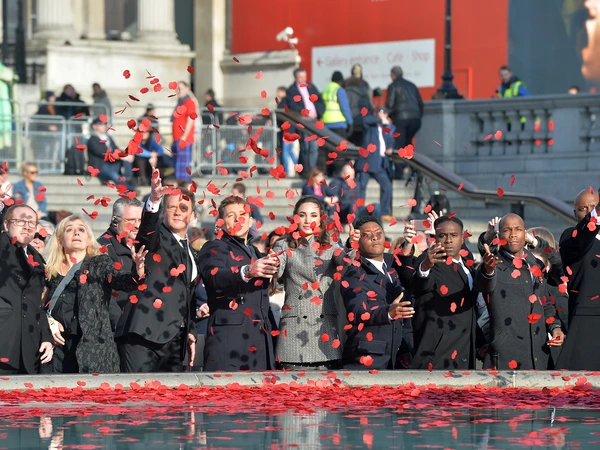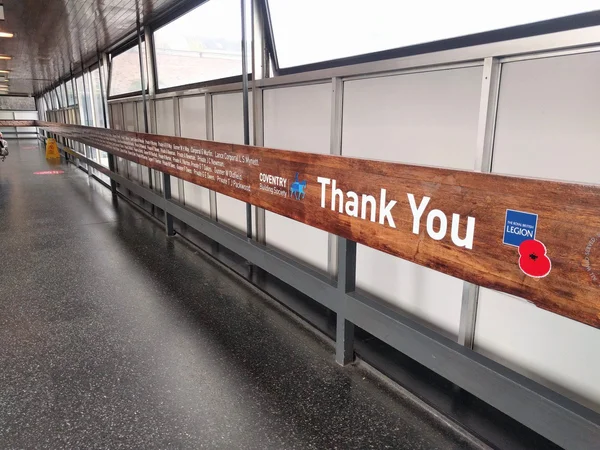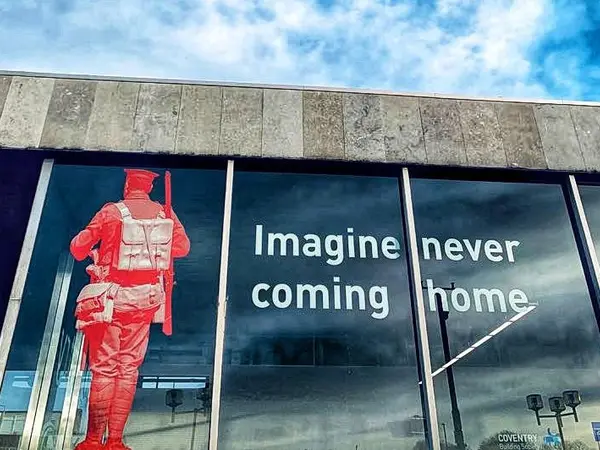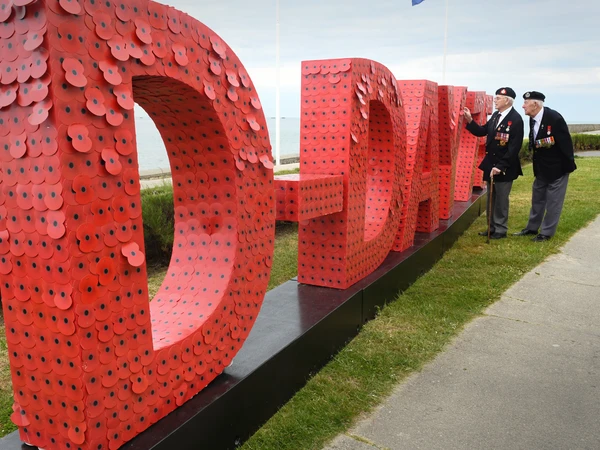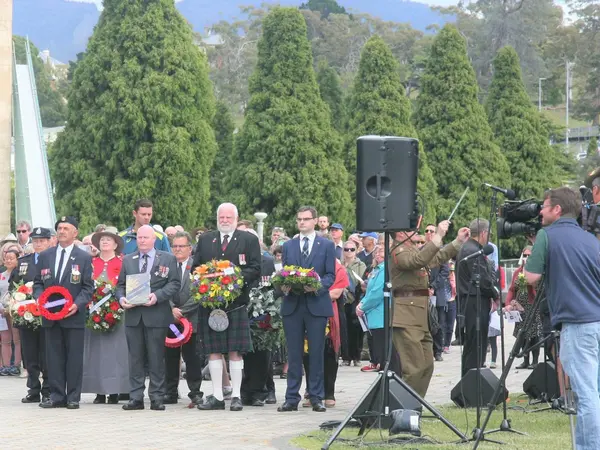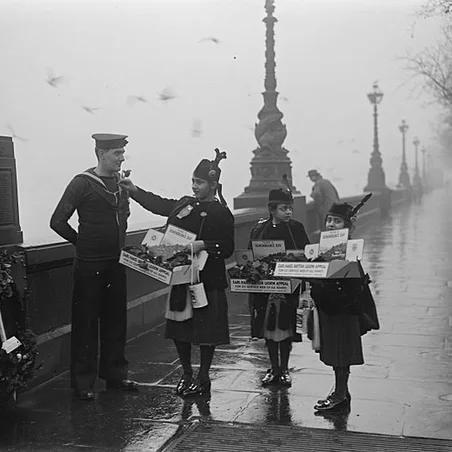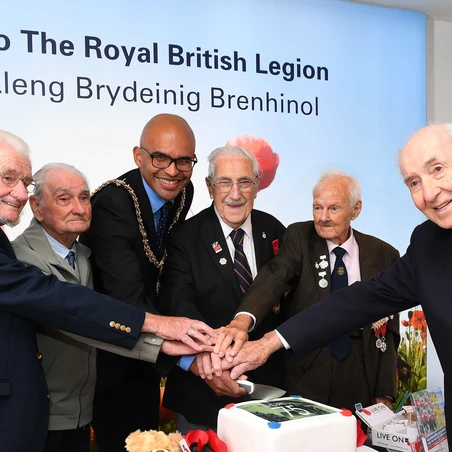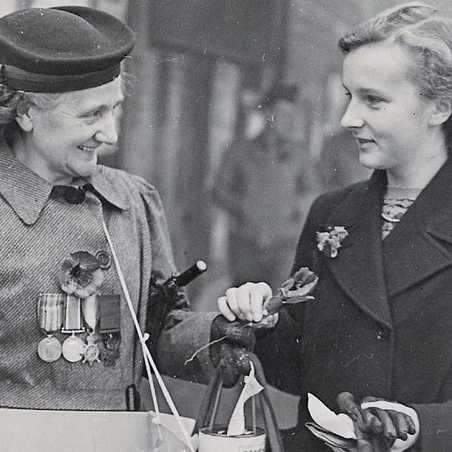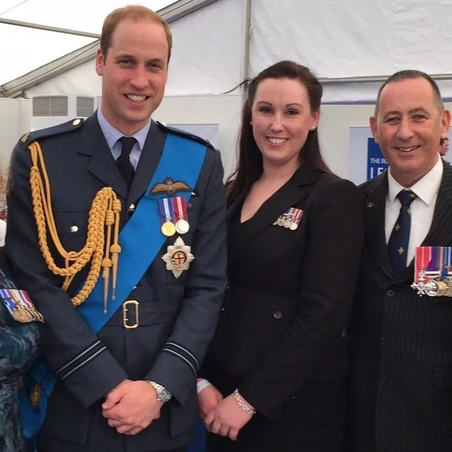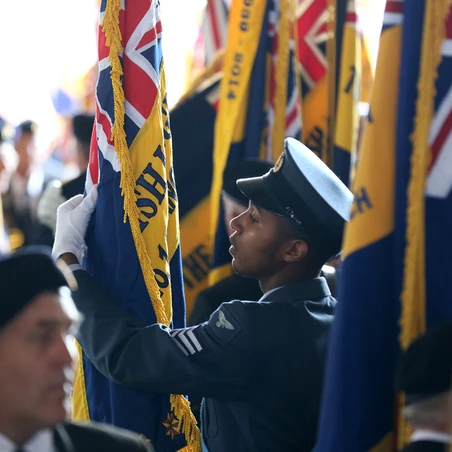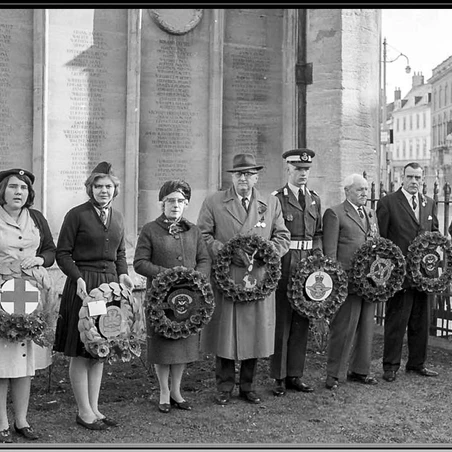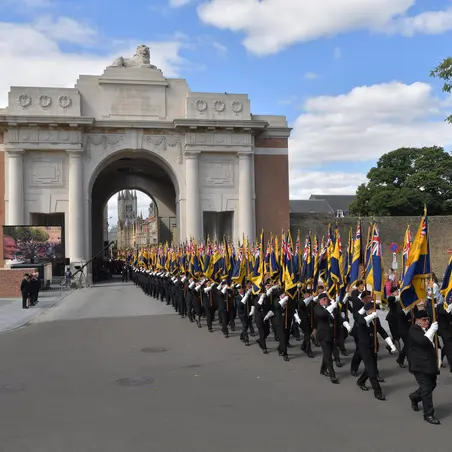Our staff, members and supporters champion Remembrance in villages, towns and cities across the world.
Remembrance honours those who serve to defend our democratic freedoms and way of life. We unite across faiths, cultures and backgrounds to remember the sacrifice of the Armed Forces community from Britain and the Commonwealth.
From our beginnings in the aftermath of the First World War, see the continuing support for Remembrance in the UK, the Commonwealth and beyond.
The Wales Area Team commemorate Welsh forces
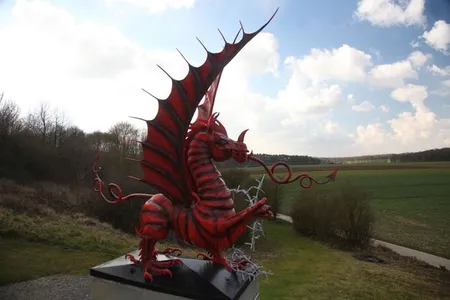
Wales Festival of Remembrance
The Royal British Legion in Wales has its own national heritage, beneficiaries, members and national events to celebrate and remember the Welsh Armed Forces community. Each year, the Wales Area team helps to organise Wales Festival of Remembrance as well as remembrance events for key battles in which Welsh forces made significant contributions to the Allied efforts in both world wars.
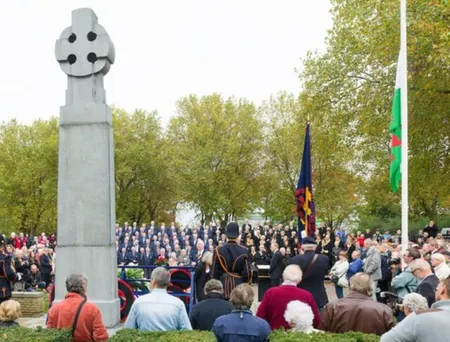
The Royal Welsh
Similarly, the team commemorate the Welsh soldiers who gave their lives in the Second World War at the Dutch city of Hertogenbosch. Each year, the town flies the Welsh flag to remember the heroic efforts of soldiers who liberated it from Nazi occupation in 1944. The Royal Welsh Bridge is named in honour of the Army unit, the 53rd Welsh Division - now the Royal Welsh – with the names of each of the 146 Welsh soldiers who died displayed in the stonework.
Silence in the square
Working with the Royal British Legion’s Commemorative Events team and numerous celebrities, a stage was assembled in Trafalgar Square for the event, alongside marquees to create a backstage area. Thousands of people arrived at the square that morning to commemorate and pay tribute.
The most extraordinary moment was, of course, the silence. The Metropolitan Police agreed to stop the traffic, Westminster Council agreed to stop the fountains and, as the bugler played the Last Post to herald the Two-minute silence, a still and emotional silence descended on the centre of London. Westminster council also agreed that the public could place poppy petals in the fountains as an act of commemoration.
Following the Reveille call, ending the Two-minute silence, there was a climactic Fly Past by four Royal Air Force Typhoons and poppy petals were placed in the fountains as an act of commemoration.
Marple Remembrance Tributes
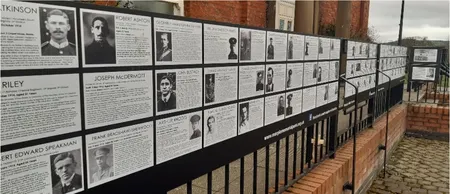
In 1999, three men from Marple, Stockport, wrote a book about the local men who gave their lives in the First World War. Remembered – Marple Men Who Fell in the Great War examines who these men were, where they lived, where they worked, where they served and where they finally fell. It was followed up in 2005 with The Fallen of World War Two.
The first man to fall was Fred Atkinson, on 24 October 1914 at the Battle of La Bassée. Exactly 100 years later, on 24 October 2014, Fred’s picture, and an extract from the book, was displayed in Marple Memorial Park to begin the Marple Timeline.
On the 100th anniversary of the day that each man fell, their details were also added in the Memorial Park until all 141 names were displayed, and the Timeline is now a remarkable permanent fixture.
Remembered - the Marple Timeline
The Marple Timeline displaying the names and details of all 141 local men who gave their lives in the First World War.
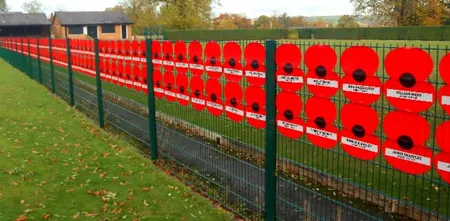
Last year, it was decided to put the names of each of the local servicemen who have fallen since the First World War onto poppies, which were then displayed on a Wall of Remembrance in Marple Memorial Park. Seeing all the poppies together at once really emphasises the loss the community has suffered over the century, and with many of their descendants still living in the area, it was a poignant exhibition of commemoration.
Wall of Remembrance
Wall of Remembrance in Marple Memorial Park displaying the names of each of the local servicemen who have fallen since the First World War onto poppies.
Coventry Building Society 'Thank You’ Campaign
"Imagine never coming home”
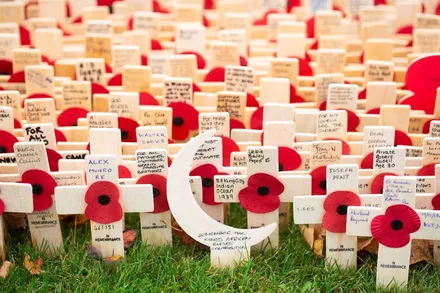
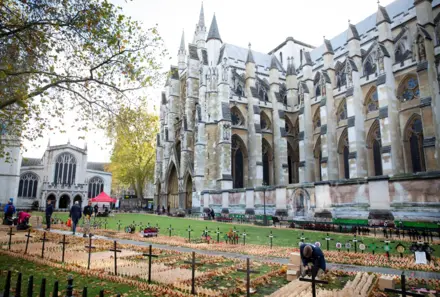
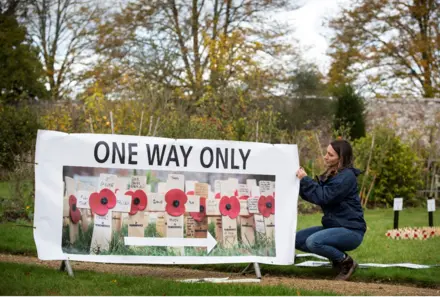
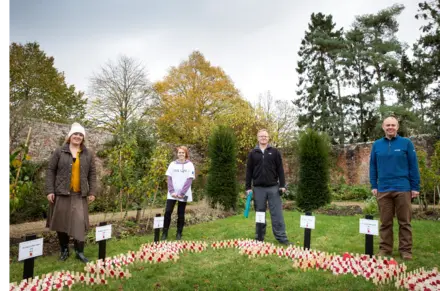
The Fields of Remembrance in the pandemic
Every November the Royal British Legion honours those who have died in conflict by planting Tributes in six Fields of Remembrance - Belfast, Cardiff, Saltwell Park (Gateshead), Lydiard Park (Swindon), the National Memorial Arboretum, and Westminster Abbey, which is run by Poppy Factory.
Each field is filled with row upon row of personal and heartfelt messages on wooden tributes. The first Field of Remembrance was planted over 90 years ago in the aftermath of the First World War, remembering those who had fallen in combat.
In 2020, RBL Campaign Leads James Reid and Ashley Barton led the Field of Remembrance amidst the threat of the Covid-19 pandemic. Despite the challenges they faced, they were determined to not let Covid-19 stop us honouring those who sacrificed so much for us all.
With some changes in line with Government restrictions, social guidance provisions, and the kind help of volunteers, three of the fields - Belfast, Cardiff, and Gateshead - were relocated to the National Memorial Arboretum Field of Remembrance. Supporters were able to visit the field at Lydiard Park in Swindon and the Arboretum, but the Westminster Abbey Field of Remembrance had to close in line with local restrictions.
The fields had their own unique dedication service before the November lockdown, which was attended by a smaller, socially distanced number of guests in line with Government guidance. You can watch the highlights from the planting of the tributes to the opening services here.
Additionally, we launched a virtual Field of Remembrance, where supporters virtually added Tributes from the comfort of their homes to remember the fallen.
Despite the challenges, the campaign raised over £1,798,600 to support the Armed Forces community.
*Images: Tributes at the NMA Field of Remembrance | Volunteers helping with planting the Tributes | One-way system being installed at the Field of Remembrance.
Oakham Castle Community Ceramic Poppies
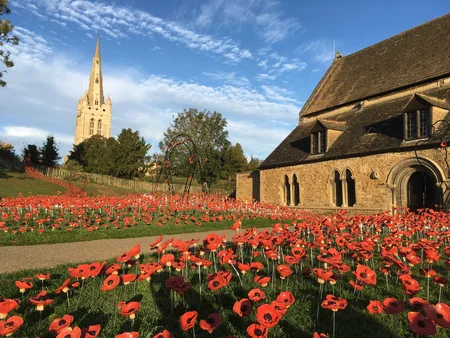
In 2018, around 10,000 ceramic poppies were made by 6,000 people within the local community in Rutland, as part of the First World War commemoration, and displayed at Oakham Castle.
First World War Centenary Tribute
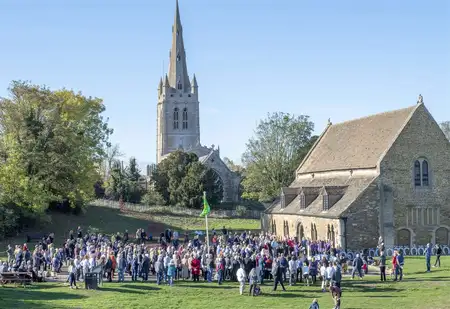
Unveiling of Rutland Poppy Project
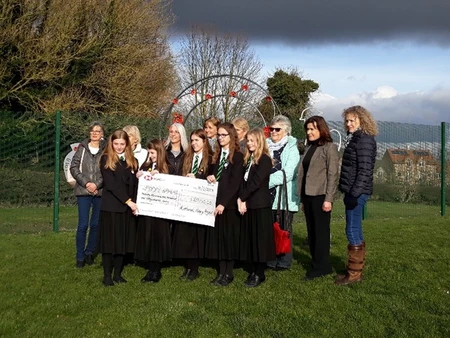
Raising £20,000 for RBL Poppy Appeal
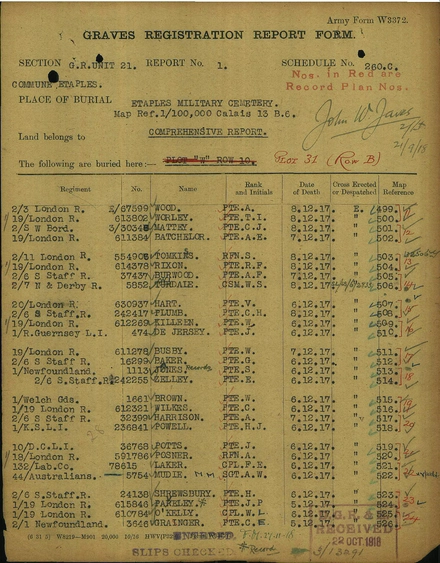
.jpg?sfvrsn=83dcb241_14&method=ResizeFitToAreaArguments&width=440&height=660)
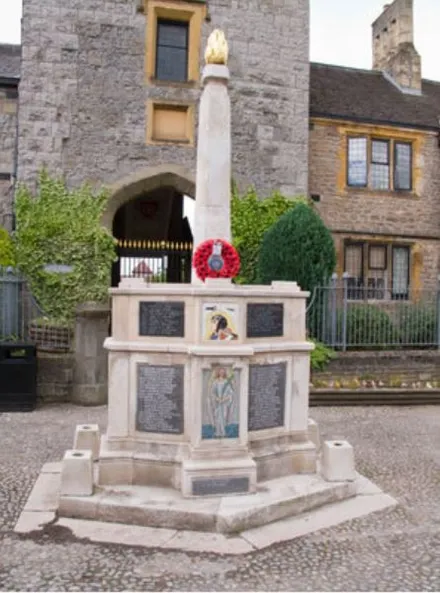
Remembering Private Archibald Frank Burwood
Private Archibald Frank Burwood 2nd/6th Battalion, South Staffordshire Regiment, enlisted in the Army in the First World War, fighting in both France and Belgium. He left behind his wife, Elizabeth, and one year old daughter, Joan. On 7 December 1917, Archie Burwood died of gas poisoning aged just 29.
Archie and Elizabeth had been living in a tied cottage (owned by the Ministry of Defence) in Bosbury, Herefordshire. As a widow, she was now obliged to vacate the property for another employee and return to the family home in nearby Ledbury. Joan grew up never knowing her father, but on her wedding day Joan walked from the church to the war memorial where she laid her bouquet in tribute to him.
Every year, to commemorate Remembrance Day, Elizabeth would take little Joan to the Ledbury war memorial to collect donations. Joan continued as a Poppy Appeal collector and local organiser every year until her death in 2003.
*Images: Archie's Graves Registration Report Form 22 October 1918 | Archie's daughter - Joan on her wedding day | Archie Burwood war memorial.
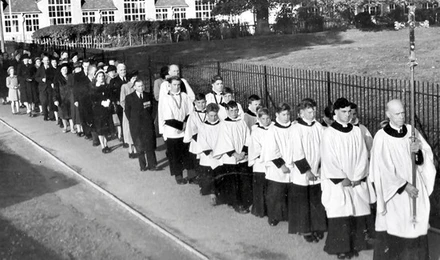

Reverend Samuel Dudley, Chipping Camden and District
Reverend Samuel Dudley was a Padre in the Second World War, supporting the Devonshire Regiment and Anti-Aircraft Units and helping wounded soldiers returning from Dunkirk. He then moved to the continent to minister to prisoners of war on their release.
After the war he moved to the Cotswolds and became chaplain of the RBL Chipping Campden Branch, leading Remembrance Day parades and spending many an evening in the RBL club, The Lygon Arms. After retiring he moved back to Barnstaple where he continued to be deeply involved with the local branch. He soon became chaplain there too where he led the Drumhead Service held in Barnstaple’s Panner Market.
Sending D-Day 75 Messages to Normandy
To commemorate D-Day 75, the Royal British Legion created a moving tribute, on the beaches of Normandy, to those who fell in 1944. RBL collated and sent over 20,000 messages from supporters to France so that their thanks and tributes could be paid on the beaches where so many men lost their lives.
D-Day 75
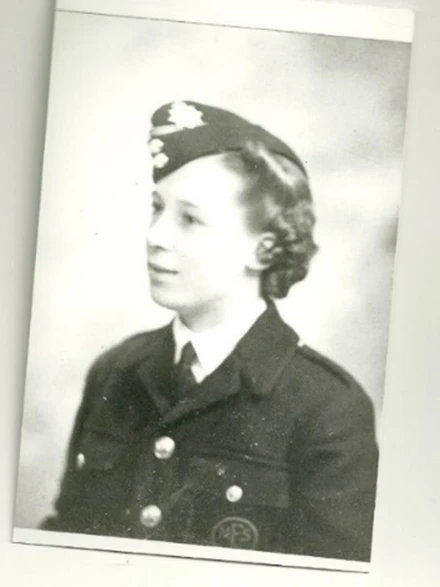
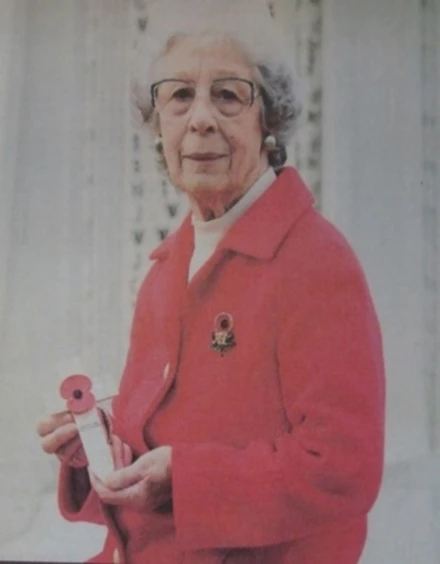
The late Mrs Joan Bunn, Welfare Secretary of the Wymondham RBL
Joan was a firewoman in the Second World War. Each year, before Remembrance Day, she took a wooden Remembrance cross to Mr Kerridge, who ran a butcher’s shop in Wymondham town, Norfolk. He and his brothers served in the First World War, but his brothers Frank and Arthur were killed in action. He would write their names on the cross and, when he could no longer do it himself, Joan did it for him. Joan would then place the cross in the small garden surrounding the town war memorial. Joan continued to perform this act of remembrance as long as she was able to.
Mr Kerridge died aged 100 in 1999. When his coffin left Wymondham Abbey draped with his ‘union jack’, 14 members of the Royal British Legion, including the standard bearer, formed a guard of honour. Joan was the Welfare Secretary of the Wymondham branch for many years.
Personal testimony by Bruce Holborn, Royal British Legion Local Campaigns Manager, Scotland
"I had travelled 11,000 miles across the globe from Scotland to stand next to a man who, for most of my life, had lived under 50 miles from me, yet we were there to take part in an Act of Remembrance that felt so completely familiar it could have been the very same ceremony I attended as a child in primary school.
That is the moment I realised the universality of remembrance and the shared global understanding of organisations like RBL. 100 years after the end of the First World War, two Scotsmen met in a far-flung corner of the world to remember the sacrifices of the past and hope for a more peaceful future. And what makes that so noteworthy, is that it being 11th November, this extraordinary turn of events felt somehow perfectly normal."
Remembrance Day 2018 in Hobart, Australia
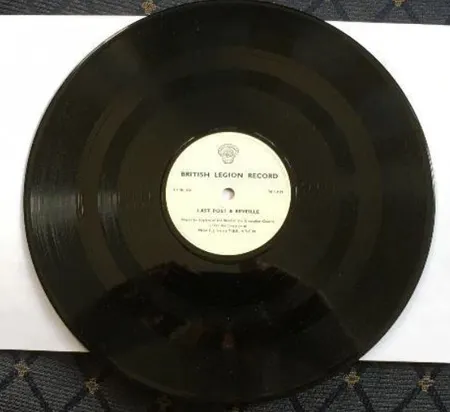
Last Post record
A 78rpm record by the British Legion labelled Record CH/BL/126 ‘Last Post and Reveille'.
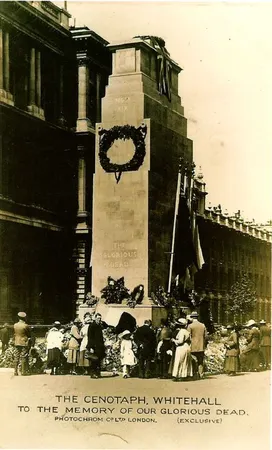
The Original Cenotaph
Image of the original Cenotaph on Whitehall, London estimated to have been taken in 1919/1920.



